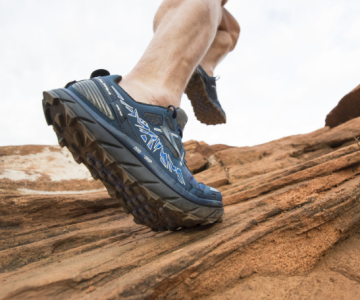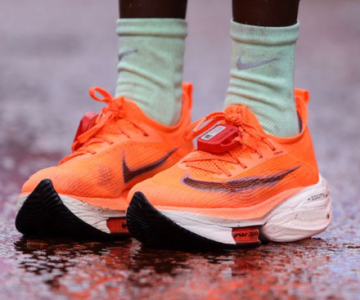When it comes to safety and comfort, the right pair of shoes can make all the difference. Whether you’re working in a slippery environment or simply walking through wet conditions, having non-slip footwear can prevent accidents and ensure your safety. In industries like food service, healthcare, and construction, or even during rainy days, slip-resistant shoes are essential.
But what exactly makes a shoe non-slip, and how do you choose the right one? Here’s a comprehensive guide to understanding non-slip shoes and how to select the best pair for your needs.
What Are Non-Slip Shoes?
Non-slip shoes, also known as slip-resistant shoes, are designed to offer enhanced traction and reduce the risk of slipping. These shoes are built with outsoles that provide extra grip, which is especially useful in environments where floors can be slippery due to water, grease, or other substances.
Whether you’re walking on a wet floor or working in a high-risk environment, non-slip shoes can be a real lifesaver. They help keep your steps secure and reduce the chances of slipping, making them ideal for anyone who spends a lot of time on their feet.
The Science Behind Non-Slip Shoes
Non-slip shoes work by increasing friction between the sole of the shoe and the surface you’re walking on. The more friction there is, the more grip you get, which helps prevent slipping. The outsole of a non-slip shoe typically features special tread patterns designed to channel water or other liquids away from the foot, ensuring better contact with the ground.
Scientists use a metric called the coefficient of friction (COF) to measure a shoe’s slip resistance. The higher the COF, the better the traction a shoe provides. Non-slip shoes often feature multi-directional grooves, wider grooves, and rougher materials, all of which help increase the COF and provide better grip.
Materials Used in Non-Slip Shoes
Several materials are used in non-slip shoes to enhance their traction and durability. Each material has its own unique properties that make it suitable for different environments. Here’s a look at some of the most common materials used in non-slip footwear:
- Polyurethane (PU): Lightweight and flexible, PU is a great material for comfort and durability. It also has good resistance to chemicals and can withstand a wide range of temperatures.
- Rubber: Known for its exceptional slip resistance, rubber is often used in non-slip shoes, particularly in industries like petrochemical work. Rubber soles can handle extreme temperatures and are resistant to many chemicals.
- EVA (Ethyl Vinyl Acetate): A soft and flexible foam, EVA is commonly used in midsoles for shock absorption. It’s lighter than rubber and offers good comfort, making it ideal for long hours on your feet.
- Thermoplastic Rubber (TPR): TPR is durable, resistant to chemicals, and performs well in both hot and cold conditions. It’s commonly used in affordable non-slip shoes.
- Croslite: Found in many Crocs shoes, Croslite is a lightweight, shock-absorbent material that provides a comfortable fit and is resistant to bacterial growth.
- Vibram: Known for its traction in outdoor and rugged conditions, Vibram soles are made of vulcanized rubber and are designed to offer exceptional grip on uneven surfaces.
Tread Patterns for Maximum Traction
The design of a shoe’s tread pattern plays a critical role in its slip resistance. The shape, size, and direction of the grooves on the outsole help channel liquids away from the shoe’s contact area, preventing slippage. Some of the most common tread patterns include:
- Hexagonal: Provides a large contact area for better grip.
- Circular: Ideal for wet conditions as it prevents water from getting trapped.
- Chevron: Provides traction with a zig-zag pattern.
- Lug: Deep, thick grooves ideal for uneven terrains.
- Sipe: Thin grooves that excel in wet and icy conditions.
- Waffle: A classic pattern that improves grip, often seen in athletic footwear.
- Diamond: Helps to remove water and provide solid traction on slippery surfaces.
Materials and Features to Consider in Non-Slip Shoes
When choosing non-slip shoes, the materials and features of the sole are crucial. The best shoes are designed to withstand different environmental challenges, such as wet or oily floors, extreme temperatures, and chemicals.
Look for shoes with soles made from durable, slip-resistant materials and tread patterns that match the conditions you’ll face. Consider additional features like anti-static properties, flexibility, and comfort, especially if you’ll be wearing the shoes for long hours.
Slip-Resistant Coatings: A New Innovation
Innovations in slip-resistant coatings have greatly enhanced the performance of non-slip shoes. One such breakthrough is the Kirigami coating, inspired by the Japanese art of paper folding. This flexible material features spikes that retract when the foot is flat and extend when the foot moves, providing improved grip in slippery conditions.
How to Identify Non-Slip Shoes
When shopping for non-slip footwear, look for labels or certifications that indicate slip resistance. Many shoes will have a “non-slip” or “slip-resistant” label, but the best assurance comes from the ASTM F3445 certification. This certification guarantees that the shoes meet the necessary safety standards for slip resistance, particularly in work environments.
Conclusion
Non-slip shoes are essential for anyone working in environments where slipping is a risk. Whether you’re on wet floors, greasy surfaces, or outdoor trails, the right pair of shoes can make all the difference in preventing accidents and ensuring your safety.
When choosing non-slip footwear, consider the materials, tread patterns, and features that will suit your environment. Don’t forget to look for the ASTM certification to ensure you’re getting the best quality. By investing in the right pair of shoes, you can confidently take each step, knowing that your feet are secure.





